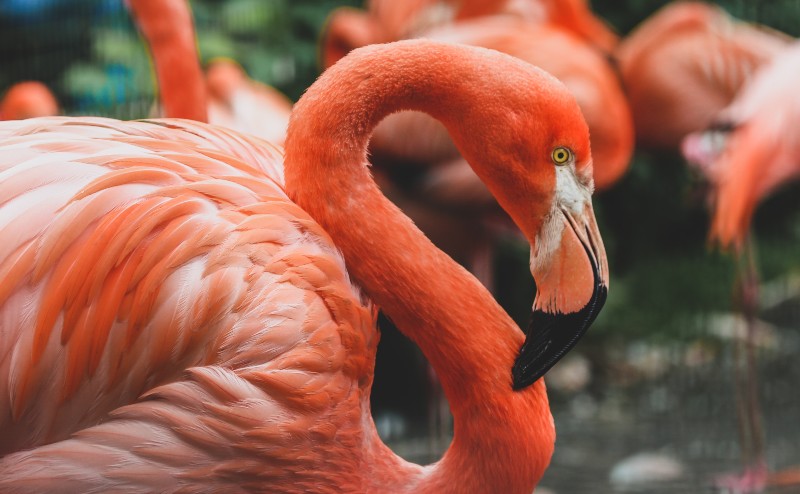In case you didn’t know, Florida’s official state bird is the Mockingbird. It’s that very common, cranky little gray bird that you sometimes see chasing around bigger birds and occasionally dive-bombing people who walk a little too close to the nest. Ever see a big crow or even a hawk being chased around the sky by a smaller bird? That little one was probably a Mockingbird. Like I said. They can be cranky. Mockingbirds are fine, and I don’t really hold anything against them, but they’re kind of a boring choice as one of Florida’s official state symbols. Mockingbirds are already the official state bird of five states. Florida shares it with Arkansas, Mississippi, Tennessee, and Texas. We need a bird that’s just ours and more uniquely Florida. Florida is a unique state, and we need a unique bird! It’s time we kill the Mockingbird as Florida’s official state bird and find a new one.
Here are ten other birds that would make a better bird to represent Florida.
American Flamingo
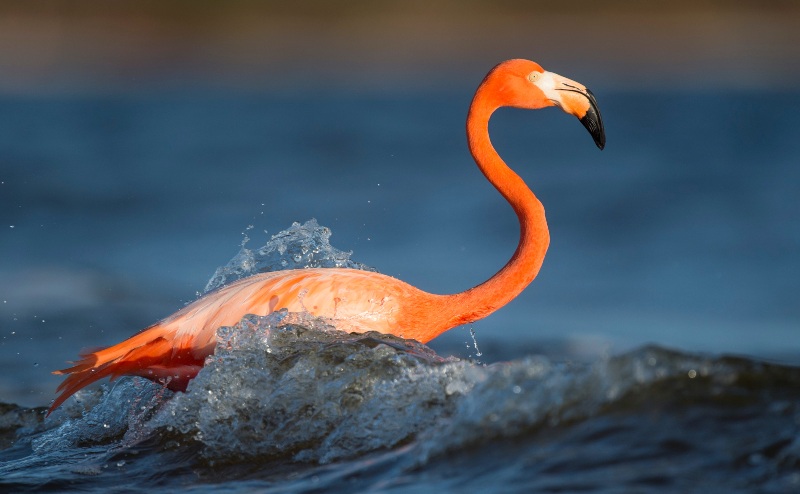
Let’s start with the obvious one, the American Flamingo. This big, silly-looking pink bird, is one of the most ubiquitous symbols of Florida. These guys appear all over Florida’s branding. You’ll find Flamingos on Florida souvenir t-shirts, postcards, and trinkets. The Florida Lottery has even made this bird their mascot. It’s practically already the unofficial state bird, so it’s just a formality to make it official. The thing is though, there’s some controversy as to whether or not Flamingos are even a species that’s native to Florida. They’re not very common, but there are wild Flamingos in the state. Most of them are found in South Florida in the Everglades and the Keys. There’s just a little disagreement on where they came from. Some say that Florida is on the northern end of their natural range and that they migrated here from the Caribbean. Others believe our wild Flamingo population mostly came captive escapees. Flamingos have been documented in the Everglades since at least 1900 and believed to have flown there from the Bahamas and just stuck around. So the truth is probably a mix of both. Some of them came here on their own, while some escaped from zoos, had more babies, and then settled in.
The fact that such an iconic symbol of Florida might not even really be from here is kind of fitting. In a state that’s full of people who moved here from someplace else, one of the state’s most iconic symbols might be from someplace else too. That’s a strong argument in favor of making the Flamingo the official state bird of Florida.
Learn More: https://www.audubon.org/field-guide/bird/american-flamingo
Roseate Spoonbill
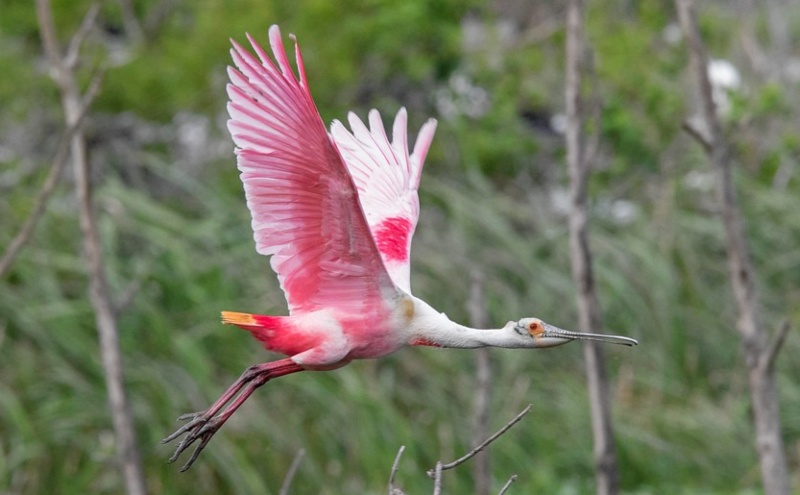
The Roseate Spoonbill is often confused with the Flamingo by some folks who just get a quick glance at one from a distance. “I saw a wild Flamingo!” some tourists visiting a Florida wetland might say. Sorry to disappoint, but it was probably “Just a Spoonbill”. Get up close to one, and you’ll see this is one strange-looking creature. It has a face like some weird dinosaur, and a big wide bill that it uses to scoop up small fish and shrimp from the shallow, muddy water it calls home. The Roseate Spoonbill would make a compelling choice for Florida’s state bird because it’s uncommon, without being rare. They’re not an everyday sight at every muddy flat or mangrove forest, but they’re seen often enough that most people are familiar with them. They’re the kind of unique, striking bird that is still fun to see since it’s not hanging out in every single tree like our Mockingbird is.
Learn More: https://www.audubon.org/field-guide/bird/roseate-spoonbill
Great Blue Heron
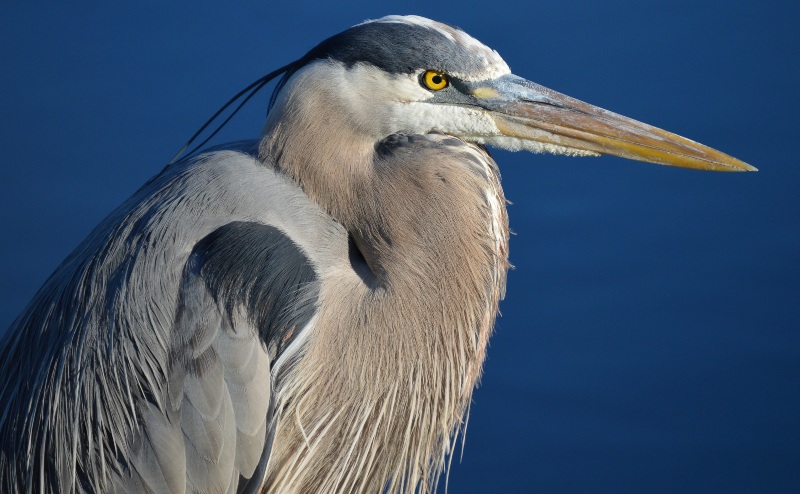
The Great Blue Heron is a big, easily recognizable bird that can often be seen standing near Florida lakes, ponds, and rivers. A marshy shoreline in Florida just wouldn’t quite look complete without a Great Blue Heron standing stoically in the reeds. Great Blue Heron’s use that long pointy beak of their’s to eat just about anything they find; fish, rodents, frogs, and even snakes are on this birds menu. The Great Blue Heron would make a nice choice as Florida’s state bird because of how large and easy to recognize they are, but they’re also very widespred. Even though they’re really common in Florida, this is a bird that can be found in every state except Hawaii. Even Alaska has Great Blue Herons, so it’s not really uniquely “ours” like a few others on the list.
Learn More: https://www.audubon.org/field-guide/bird/great-blue-heron
Great Egret
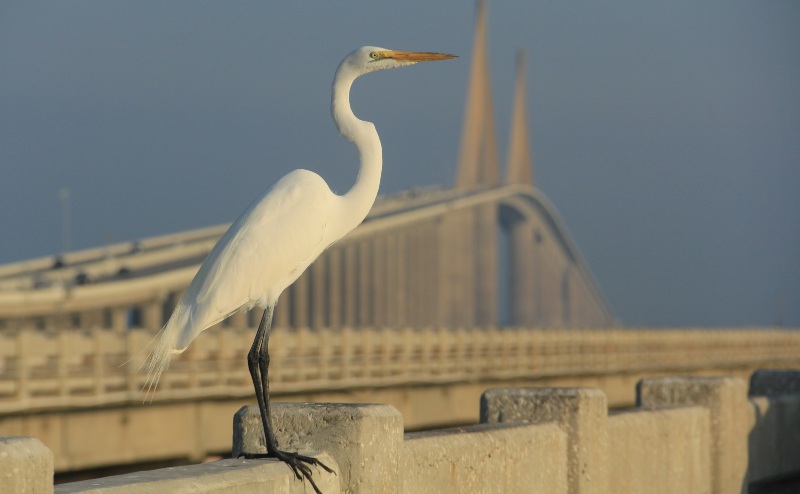
The Great Egret is nearly as large as the Great Blue Heron, but a little less common, and just gorgeous to look at. This bird’s stunning looks were almost it’s undoing. This bird was nearly hunted to extinction because fancy ladies back in the 1800s needed to use their feathers in their hats. Thankfully we put an end to that stuff and protected this bird from hunting. Its numbers have rebounded spectacularly to the point where it’s fairly easy to find them today. The Great Egret is already the official symbol of the National Audobon Society, and its inspiring comeback story would make this big, brilliantly white bird a great choice for Florida’s bird too. They’re found sporadically throughout the southeast, but their range completely covers all of Florida.
Learn More: https://www.audubon.org/field-guide/bird/great-egret
Snowy Egret
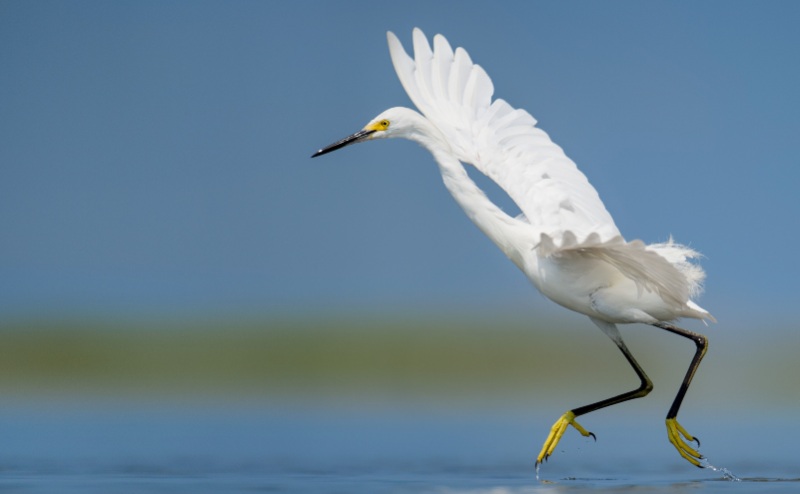
Snowy Egrets are the smaller, cuter cousins of the Great Egret but are sometimes mistaken for each other anyway. They’re often found in the same habitat and have roughly the same geographic range. So a quick way to tell them apart is that (besides being smaller) Snowy Egrets have black bills, while Great Egrets have yellow bills. Just like the Great Egret, they were hunted for their white feathers and almost wiped out before being federally protected. Today they’re a common sight around water and even just walking around the neighborhood. The Snowy Egret can be a noisy little fella, with a really loud and harsh squawk!
Learn More: https://www.audubon.org/field-guide/bird/snowy-egret
Double Crested Cormorant
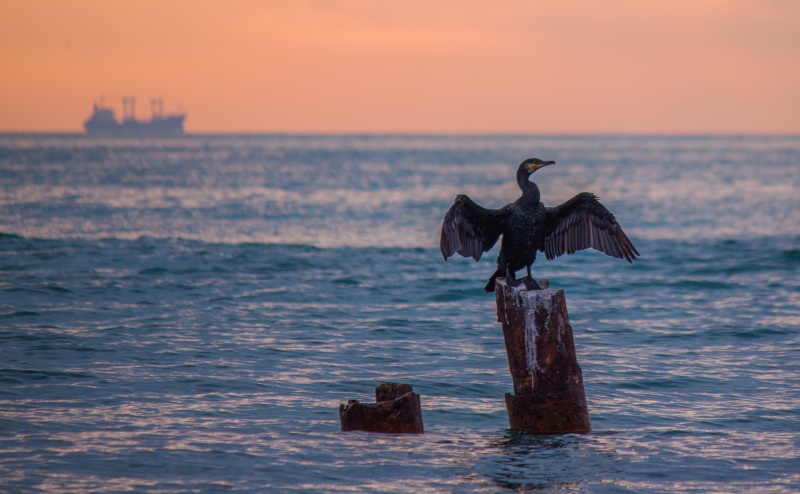
Go to nearly any body of water and you’ll often find Cormorants sunning themselves with their wings wide open. Cormorants look like some wacky combination of a pelican and a duck, but with a hook-shaped bill that clearly tells us this bird is a hunter. They spend a lot of time diving through the water looking for fish and other little critters to eat, then dry off by spreading their wings in the sunshine. That wing thing they do makes these birds so instantly recognizable that we’ve all seen it and can instantly identify these. Cormorants can be found everywhere in Florida all-year-long. Go the beach, your local pond, or a river and you’ll often find these strangely striking looking birds.
Because Cormorants are so widespread and recognizable (if maybe a little goofy looking) they’d make a good nominee as Florida’s state bird.
Learn more: https://www.audubon.org/field-guide/bird/double-crested-cormorant
Florida Scrub Jay
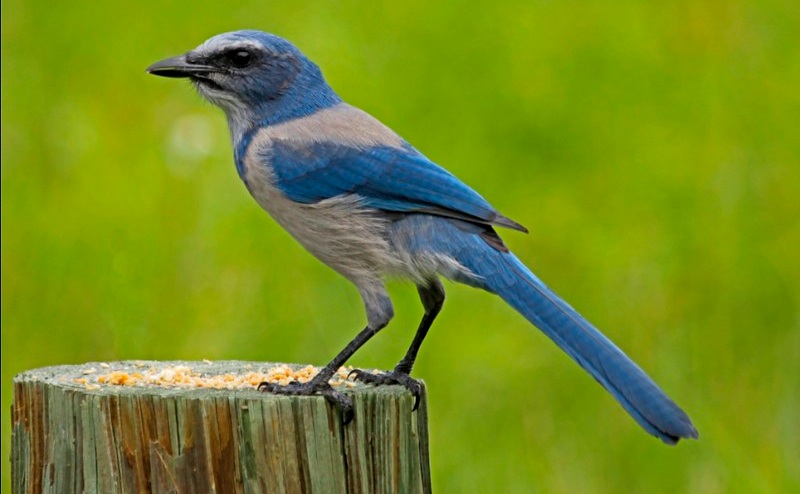
The Florida Scrub Jay is the only bird in Florida that’s endemic to the state. That means it’s found only here, and nowhere else. That right there gives this cute little blue bird a strong argument to be Florida’s official state bird. None of the other birds here can claim that. The Florida Scrub Jay is a really interesting bird. It’s found only in Florida, and it has a pretty complicated social system with groups of “helpers” all coming together to help raise one mated pair’s offspring. Florida Scrub Jays are also incredibly tame and friendly to humans They’ve been known to fly right up to people and eat out of the palm of their hand. This can mess with their natural feeding behavior though, so it’s not a good idea to feed them like that. Sadly, the number of Florida Scrub Jay is on the decline due to loss of habitat. They like to live in scrubland across Central Florida, and a lot of that land is getting turned into real estate development for humans. That could be another huge reason to kick off the Mockingbird and make the Scrub Jay Florida’s official state bird; to protect one of our state symbols like we’re trying to do with the Florida Panther and Manatee.
Learn More: https://www.audubon.org/field-guide/bird/florida-scrub-jay
Snail Kite
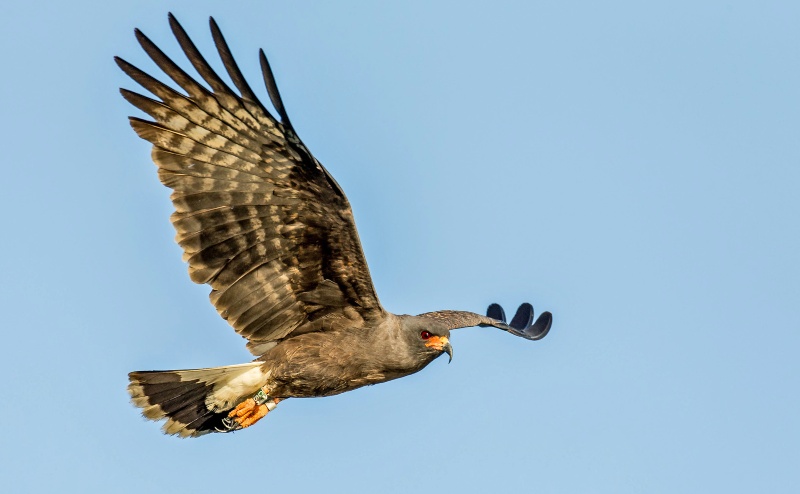
We had to put at least one bird of prey on this list! Florida is home to lots of ospreys, hawks, and even has more Bald Eagles than any other state in the lower 48. But the Snail Kite is the only one that can found only in Florida. These members of the hawk family got their name because they feed almost exclusively on snails! They might look like the kind of bird that you’d expect to see diving for rodents, but it’s those slow-moving mollusks they eat instead. When finding snails gets tough, they will occasionally look for other things like crabs and even small turtles. Loss of wetland habitat in Florida has been tough on the Snail Kites. They’re currently listed as endangered, mostly because with the loss of wetland habitat, also goes the snails that they love to eat. The Snail Kite would make a great choice for Florida’s state bird. It’s majestic looking, it’s unique to Florida, and that would give us another reason to help save it.
Learn More: https://www.audubon.org/field-guide/bird/snail-kite
Black Skimmer
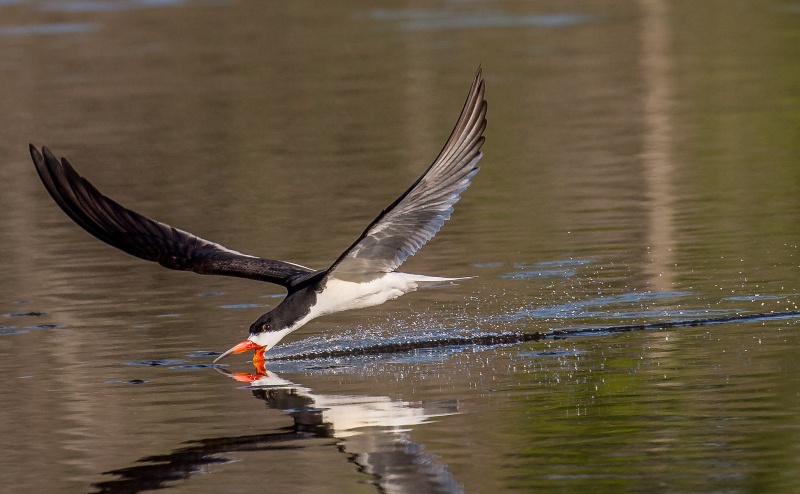
We have to include at least one of the common beach birds on this list, and we’re not about to nominate that french-fry stealing seagull, so let’s go with these seabirds instead. Black Skimmers are awesome and it’s always a huge treat to see them feeding while at the beach. Just like their name suggests, they fly just over the surface, skimming the water with their beak to catch little fish. They’re also just so cool looking. That black and white pattern, with a bright orange beak, makes them resemble little flying penguins. Black Skimmers are common enough that’s usually easy to see them doing their thing at the beach, but not everywhere (like those dang seagulls) so it’s still a treat when you do see one. Florida’s beaches are one of the biggest parts of so many vacations here so it would be great to have such a great looking bird that does something so interesting as our state bird. Those who’ve seen them always remember them!
Learn more: https://www.audubon.org/field-guide/bird/black-skimmer
Sandhill Crane
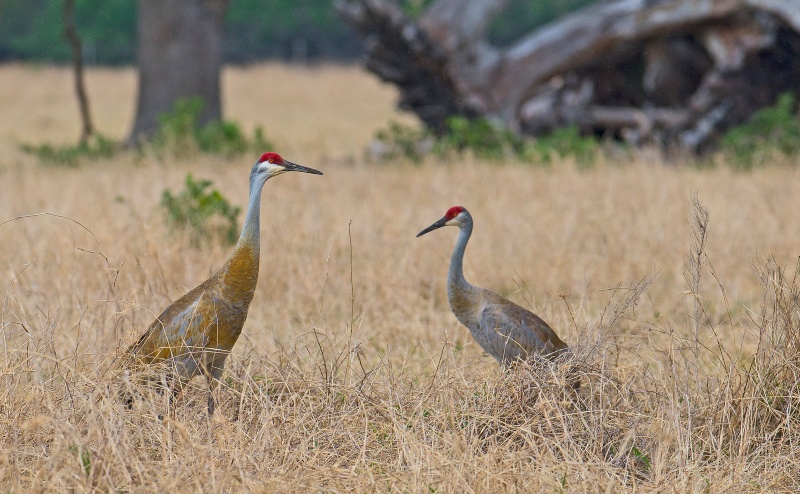
Sandhill Cranes can be found all across the USA during different times of the year when they migrate, but Florida is one of the very few places you can commonly find them all year round. You’ve probably seen these big loveable redheads walking around a suburban neighborhood and maybe even blocking traffic while they slowly amble across the road. They take care of their young for up to 10 months too, so when you see them, it’s often with a couple of youngsters tagging along. It’s always a pretty surreal sight to see such a large bird just chilling around people, and their loud “honk” that they make while they fly is unmistakable. They’ll eat just about anything they can find too. Sandhill Cranes would be another great candidate for our state bird because they’re just so loveable (except when they’re blocking traffic!) and are found here all year long.
Learn More: https://www.audubon.org/field-guide/bird/sandhill-crane
Do you have a favorite Florida bird that you think should be Florida’s state bird?
Let us know in the comments! Tell us why your bird would be great choice to represent Florida.

